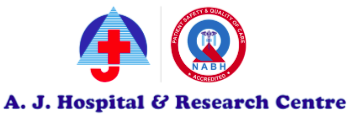
Typhoid: Symptoms, Transmission, and Prevention
Typhoid , caused by the bacterium Salmonella Typhi, remains a pressing global health issue, especially in regions with poor sanitation and limited access to clean water. This bacterial infection, which can be life-threatening if untreated, primarily spreads through contaminated food and water. Understanding the symptoms, modes of transmission, and preventive measures can help mitigate the spread of this disease and protect public health.
Symptoms of Typhoid:
Typhoid symptoms usually manifest 1-3 weeks after exposure and can vary from mild to severe. Recognizing these symptoms early is crucial for prompt treatment.
Common symptoms include:
1. High Fever: Persistent fever, often reaching 104°F (40°C).
2. Weakness and Fatigue: General body weakness and prolonged fatigue.
3. Stomach Pain: Abdominal pain and discomfort.
4. Headache: Severe, persistent headaches.
5. Loss of Appetite: Anorexia, leading to weight loss.
6. Rash: Flat, rose-coloured spots on the chest and abdomen.
Without timely treatment, typhoid can lead to severe complications such as intestinal perforation, peritonitis, and even death.
> Transmission of Typhoid -
Typhoid is predominantly transmitted via the faecal-oral route. This means the bacteria spread through ingestion of food or water contaminated with faeces from an infected person. Factors that contribute to the spread include:
- Poor Sanitation: Lack of adequate sewage disposal systems.
- Contaminated Water: Drinking or using water from contaminated sources.
- Food Handling: Consuming food prepared by someone who carries the bacteria or having food from unhygienic places.
Preventive Measures -
Preventing typhoid involves a combination of personal hygiene practices, public health initiatives, and vaccination.
1. Vaccination:
Vaccination is a highly effective preventive measure, especially for individuals travelling to or living in high-risk areas. There are two primary types of typhoid vaccines:
- Inactivated (Killed) Vaccine: Administered as an injection, requiring a booster every two years.
- Live Attenuated Vaccine: Taken orally, requiring a booster every five years.
2. Ensuring Safe Drinking Water:
Access to clean and safe drinking water is essential to prevent typhoid.
- Boiling Water: Boil water for at least one minute to kill bacteria.
- Water Purification Tablets: Use tablets to purify water when boiling is not feasible.
- Bottled Water: Opt for bottled water from reputable sources, especially when travelling.
3. Improving Sanitation:
Enhancing sanitation infrastructure can significantly reduce the spread of typhoid.
- Proper Waste Disposal: Ensure efficient sewage systems and proper waste disposal methods.
- Handwashing Facilities: Provide access to handwashing facilities with soap and clean water.
- Sanitation Education: Conduct community education on the importance of sanitation and hygiene.
4. Practicing Food Safety:
Adopting safe food handling practices is crucial to prevent contamination.
- Cook Food Thoroughly: Ensure all meat, poultry, and eggs are cooked thoroughly.
- Avoid Raw Foods: Be cautious with raw fruits and vegetables that cannot be peeled.
- Exercise Caution with Street Food: Avoid consuming food from street vendors, particularly in areas with questionable hygiene.
5. Maintaining Personal Hygiene:
Good personal hygiene can help prevent the spread of typhoid.
- Handwashing: Wash hands frequently with soap and water, especially before eating and after using the toilet.
- Avoid Sharing Utensils: Do not share eating utensils, cups, or food with infected individuals.
- Clean Bathrooms: Keep bathrooms clean and disinfected regularly.
6. Community Health Initiatives:
Community engagement in health initiatives is vital for controlling typhoid.
- Health Education Campaigns: Regularly inform communities about typhoid prevention and control measures.
- Vaccination Drives: Organize vaccination campaigns to increase coverage, particularly in high-risk areas.
- Disease Surveillance: Implement robust surveillance systems to quickly detect and respond to outbreaks.
Typhoid remains a significant health threat, particularly in areas with inadequate sanitation and clean water access. By understanding the symptoms, modes of transmission, and preventive measures, we can effectively combat this disease. Vaccination, safe drinking water, improved sanitation, food safety practices, and personal hygiene are key strategies in preventing typhoid fever. Through coordinated community health initiatives, we can work towards a future where typhoid fever is no longer a public health threat.
